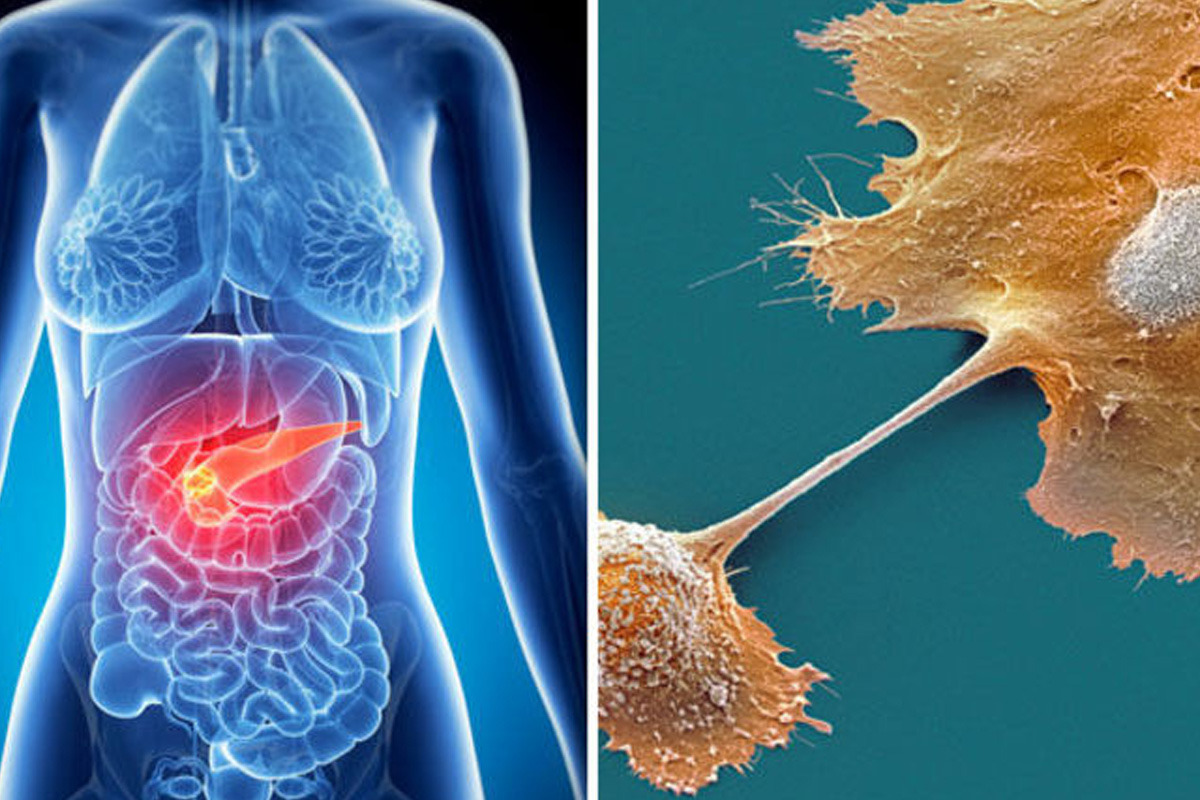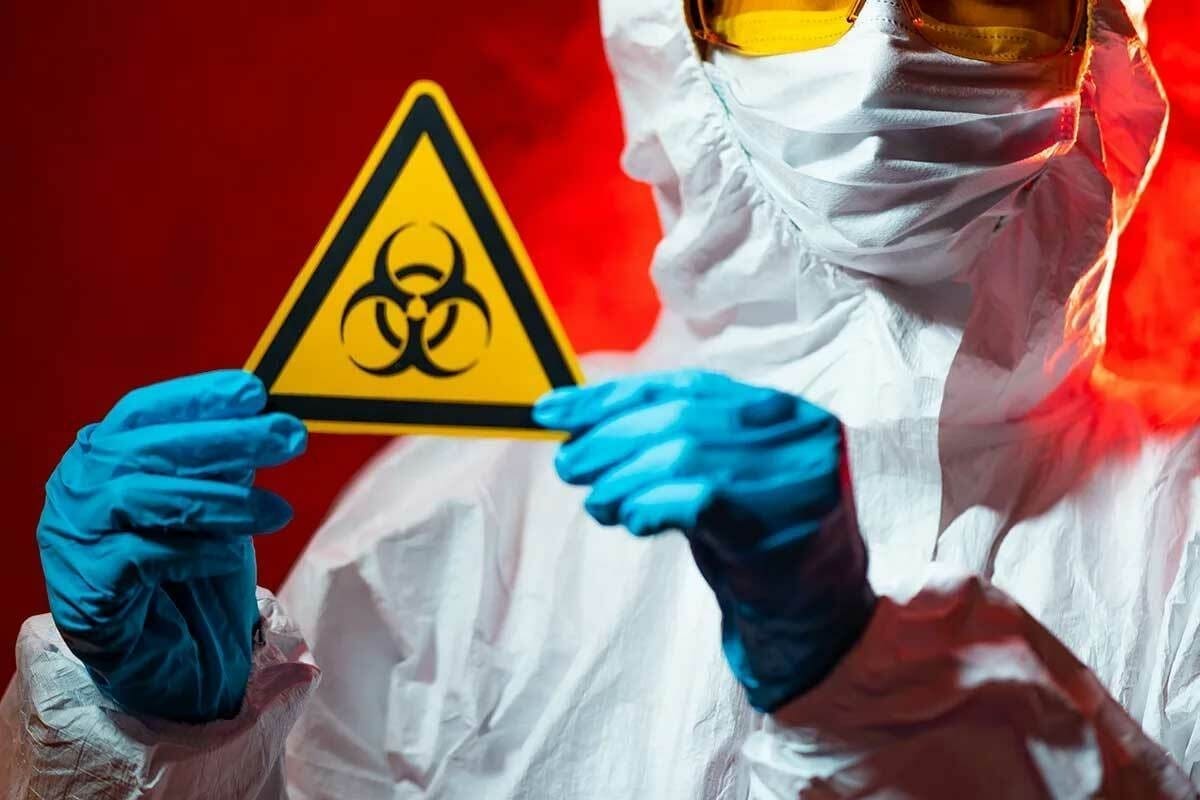Last Updated on November 27, 2025 by Bilal Hasdemir
How long can you have lung cancer without knowing? It’s alarming to know that 1 in 15 people will develop lung cancer in their lifetime. Often, they won’t show symptoms until it’s too late.
Lung cancer can stay undetected for years, making it a silent killer. Not knowing about hidden symptoms leads to late diagnosis and treatment.
Key Takeaways
- Lung cancer can be asymptomatic for years.
- Early detection is key for effective treatment.
- Knowing hidden symptoms can help diagnose sooner.
- Understanding risk factors can spot cases early.
- Regular check-ups are essential for those at high risk.
Understanding the Silent Nature of of Lung Lung Cancer

Lung cancer is often called a silent killer because it can grow without causing symptoms. This makes it hard to catch early. It’s important to know the signs of lung cancer to help find it early.
Early detection is key to treating lung cancer. It’s vital to watch for any changes in your body. This way, you can catch lung cancer before it spreads.
Knowing the symptoms of lung cancer is the first step. Look out for coughing, wheezing, and shortness of breath. These signs can mean lung cancer, but they can also mean other things.
It’s important to see a doctor if you notice these symptoms. They can check for lung cancer and find out what’s causing the symptoms.
Don’t ignore any symptoms that seem off. Lung cancer can grow quietly, so it’s important to get checked out. Early detection can help save lives.
Early Detection is Key
Early detection is the best way to fight lung cancer. It’s important to know the symptoms and see a doctor if you notice anything different. This way, you can get treatment early and have a better chance of beating lung cancer.
Timeline of of Silent Lung Lung Cancer Progression
Knowing how lung cancer progresses is key to catching it early. Lung cancer goes through stages, each with its own signs.
Early Stage
In the early stages, lung cancer might not show symptoms or they could be very mild. It’s common for lung cancer to go undetected for years. At this point, the cancer is small and can be treated if found.
A study found, “Early-stage lung cancer often lacks specific symptoms, making it challenging to diagnose without screening.” Screening high-risk populations is vital for early detection.
Middle Stage Progression
When lung cancer reaches its middle stage, it grows and might spread to nearby areas. The symptoms can be vague, like a cough or breathing changes. Some people might see a doctor, but symptoms are often mistaken for other issues.
A doctor noted, “The challenge with lung cancer is that its symptoms are often similar to those of more common, less harmful conditions, leading to delayed diagnosis.” This shows why awareness and proper tests are so important.
Late Stage Manifestation
In its late stage, lung cancer becomes aggressive and shows clear symptoms. Pain, significant weight loss, and difficulty breathing are common. By then, the cancer has likely spread, making treatment harder.
- Persistent and worsening symptoms
- Spread to distant organs
- Significant impact on quality of life
Understanding lung cancer’s progression highlights the need for early detection strategies and awareness of its silent nature.
Types of of Lung Lung Cancer Cancer and Their Detection Detection Windows
Lung cancer is complex, with NSCLC and SCLC being the main types. Each has its own detection window.
Lung cancer is divided into two main types: Non-Small Cell Lung Cancer (NSCLC) and Small Cell Lung Cancer (SCLC). NSCLC makes up about 85% of lung cancers. It includes subtypes like adenocarcinoma, squamous cell carcinoma, and large cell carcinoma.
Non-Small Cell Lung Cancer (NSCLC)
NSCLC grows and spreads slowly. Its symptoms are often mild and can be mistaken for other conditions. Early-stage NSCLC may not show symptoms at all. Symptoms like coughing, chest pain, and breathing trouble may appear later.
The detection window for NSCLC is longer because it grows slowly. But, its silent growth can lead to late diagnosis when it’s already advanced.
Small Cell Lung Cancer (SCLC)
SCLC is aggressive and grows fast. It often has severe symptoms at diagnosis. SCLC is strongly linked to smoking and spreads quickly to other parts of the body. Early detection is key.
Because SCLC grows fast and spreads early, its detection window is narrow. Symptoms like significant weight loss, coughing up blood, and severe chest pain prompt quick medical checks.
Knowing the difference between NSCLC and SCLC is vital for treatment. NSCLC has a slightly better prognosis because it grows slower. But SCLC’s aggressive nature means it needs quick and aggressive treatment.
Average Timeframes:: How Long Lung Lung Cancer Can Remain remain Unnoticed
Lung cancer is often called a “silent killer” because it can grow without symptoms for a long time. Knowing how long it takes to diagnose is key for early treatment. Many things can delay diagnosis, like the cancer type, health, and environment.
achie
Research shows lung cancer often goes unnoticed for a long time. Symptoms may not appear until 6 months to a year or more after the cancer starts. This depends on when symptoms show up and the person’s health.
Statistical Data on Delayed Detection
Many lung cancers are found too late. About 60% are diagnosed at stage III or IV, which means they’ve grown a lot. This is because early symptoms are not clear, leading to late diagnosis.
tr th>Stage at Diagnosis th>Average Time to Diagnosisth> tr> th>Stage I th>15% td> tr> Stage IIed II 25% 6-12 months months td> tr> 40% td> > 20% td> tr>
| Percentage of Cases |
| 3-6 months |
| 1-2 years |
| td>1-2+ years |
Factors Affecting Detection Time
Many things can make it harder to find lung cancer early. Symptoms, health, and what you’re exposed to are important. For example, smoking a lot or being exposed to harmful substances can make the disease grow faster. Some people might be more likely to get lung cancer because of their genes.
Growth Rate Variations
Lung cancer grows at different rates in different people. Things like the cancer type, genes, and health can affect how fast it grows. For example, some types of lung cancer grow slower than others. Knowing this helps doctors plan better treatments.
By looking at how long lung cancer goes unnoticed, we can learn more about why it’s hard to catch early. This information helps us find ways to detect and treat lung cancer sooner. It can help people live longer and better lives despite this serious disease.
Common Symptoms Symptoms That Are Often Often Overlookde
Knowing the subtle signs of lung cancer can help catch it early. Lung cancer often shows symptoms that seem like other, less serious issues. It’s key for both patients and doctors to recognize these signs.
Respiratory Changes Mistaken for Other Conditions
Respiratory changes are common lung cancer symptoms. These include coughing, wheezing, or feeling short of breath. Often, people think these are from asthma, COPD, or a cold, which can delay finding out the real cause. It’s vital to watch for any lasting or getting worse respiratory symptoms.
A cough that won’t go away or a change in wheezing could mean lung cancer. “A chronic cough is a common symptom that can be easily overlooked until it’s too late,” says a leading oncologist.
Pain Patterns That Indicate Hidden Tumors
Pain is a symptom of lung cancer, but it’s often misunderstood. Chest, shoulder, or back pain can mean lung tumors, big or spread. The pain’s nature and intensity can vary a lot, making it hard to diagnose.
A tumor in the upper lung can cause shoulder or arm pain, known as Pancoast tumor. Spotting these pain patterns as lung cancer signs is key for quick medical help.
Systemic symptoms like fatigue, weight loss, and loss of appetite are often seen as aging or other issues. But if these symptoms last or come with respiratory changes or pain, they might mean lung cancer. Being alert to these symptoms and talking to a doctor can help find lung cancer sooner.
Silent Lung Cancer: Why Causes Present No Early Symptoms
It’s important to understand why some lung cancers don’t show symptoms early. This is due to several reasons, like tumor location and physiological differences in people.
Tumors in certain lung areas might not cause symptoms until they grow a lot or spread. For example, tumors in the lung’s edge might stay quiet until they touch nearby tissues or cause fluid buildup.
How symptoms show up can also vary. This is because people’s lung functions and health levels differ. Some might not notice symptoms until the tumor has grown a lot.
- Tumor location is key in showing symptoms early.
- Physiological differences affect how lung cancer shows up.
- Knowing these helps in making better screening plans.
Scientists are working hard to understand silent lung cancer. They look at tumor biology and how each person’s body reacts. This research helps doctors find cancer early and treat it better.
Risk Factors That Increase the Chance of Undetected Lung Cancer
Several risk factors can make lung cancer hard to detect. Knowing these factors is key to early treatment and better survival rates.
Smoking is the biggest risk for lung cancer. Tobacco smoke has harmful chemicals that damage lung cells. Smokers are more likely to have cancer that’s not caught early. Studies show smoking causes 80-90% of lung cancer deaths worldwide.
Environmental and work-related hazards also raise lung cancer risk. Exposure to asbestos, radon, and certain chemicals increases risk. Workers in construction, mining, and manufacturing are at high risk. For example, asbestos can cause mesothelioma, a lung cancer type.
Genetic predispositions also play a part. People with a family history of lung cancer are at higher risk. Certain genetic mutations, like in the EGFR gene, can make lung cancer more likely, even in non-smokers.
Age is another important factor. Lung cancer is more common in older adults, with most cases in those over 65. Older people are also more likely to have other health issues that make diagnosis and treatment harder.
Other risk factors include passive smoke, previous lung diseases, and certain diets. For example, a diet low in fruits and vegetables can increase lung cancer risk.
In summary, knowing these risk factors is essential for early detection and effective management of lung cancer. By understanding and addressing these risks, individuals can take steps to reduce their risk and seek medical help if symptoms arise.
Diagnostic Diagnostic Challenges: Lung Lung Cancer Gets Missed (300(300)
2>Diagnostic Challenges: Lung Cancer Gets Gets Missed
The complexities of diagnosing lung cancer are significant in oncology.
>
Diagnosing lung cancer is difficult due to the limits of diagnostic tools and the nature of the disease.
>
Healthcare access is a major factor in delayed diagnosis. Without adequate insurance or regular checkups, timely screenings are missed. This leads to delayed detection.
Adequate healthcare infrastructure is key for early detection and treatment of lung cancer.>
Lung cancer’s complexity, with its many subtypes and stages, adds to the diagnostic challenges. Non-small cell lung cancer (NSCLC) and small cell lung cancer (SCLC) have different prognostic and therapeutic implications, making diagnosis harder.
To sum up, diagnosing lung cancer is a significant challenge. We need to improve diagnostic technologies, make healthcare more accessible, and raise awareness about the disease. By doing this, we can find and treat lung cancer early, leading to better outcomes for patients.
Casease Studies: Patients with Long Long-Undetected Undetected Lung Lung Cancer
Case studies of patients with long-undetected lung cancer offer valuable insights. They show how the disease can quietly progress. These examples stress the need for early detection and increased awareness.
Early Stage Stage Cases Found Incidentally
Many lung cancers are found by chance during tests for other issues. For example, a routine CT scan might reveal early-stage lung cancer. This highlights the role of regular health checks and advanced imaging in catching cancer early.
Advanced Advanced Cases with Minimal Prior Symptoms
>
Some patients are diagnosed with advanced lung cancer with little to no symptoms. These cases show how some cancers can grow quickly and be hard to detect early. Learning from these cases helps us understand why some cancers progress so fast.
th>Number of Patients > tr> d> tr> > d> tr>
| Stage at Detection | th>Survival Rate | |
| Early Stage | 50 | 80% |
| Advanced Stage | 20 | 20% |
table>
Stage-by-Stage Retrospective Statistics
Looking at stage-by-stage data helps us see how lung cancer progresses. Patients diagnosed early have much better survival rates than those diagnosed later. This shows how critical early detection and treatment are.
Impact of of Early Detection on Prognosis
Understanding the impact of early detection on prognosis is key to better patient outcomes. Early detection not only increases survival chances but also improves quality of life. By catching lung cancer early, doctors can offer more effective treatments, leading to a better prognosis.
4>
3> Persistent Respiratory Symptoms
Patients with ongoing respiratory issues might have undiagnosed lung cancer. Spotting these symptoms can lead to quicker diagnosis and treatment. It’s vital for anyone with unexplained and persistent respiratory symptoms to get medical help right away.
The Importance of Awareness and Proactive Health Monitoring
Raising awareness about lung cancer is key. It helps in early detection and treatment. Lung cancer often stays silent for a long time. So, it’s vital for people to watch their health closely.
Regular check-ups and screenings are important. They can catch lung cancer early when it’s easier to treat. The American Cancer Society suggests annual screenings with low-dose computed tomography (LDCT) for those at high risk.
By spreading the word and encouraging health checks, we can save lives. It’s important for people to take care of their health. Also, doctors should teach patients about the value of catching cancer early.
FAQ
How long can lung cancer remain undetected?
Lung cancer can hide for a long time, often until it’s advanced. How long depends on the cancer type, its growth, and personal factors.
What are the common symptoms of silent lung cancer?
Early silent lung cancer might not show symptoms. Look out for changes in breathing, feeling tired, losing weight, and pain. These signs might mean hidden tumors.
Why is lung cancer often diagnosed at a late stage?
Lung cancer is often late to be found because it’s quiet and has no early signs. It’s hard to catch with regular checks. Smoking, bad environments, and genes also play a part.
What is the difference between NSCLC and SCLC in terms of detection?
NSCLC grows slower and stays hidden longer than SCLC. SCLC is aggressive and found sooner. This is because of how each type grows and spreads.
Can lung cancer be detected early through screening?
Yes, early detection is possible with screening, mainly for those at high risk. Tests like low-dose CT scans can spot lung cancer early. This can lead to better treatment and survival chances.
What are the risk factors that increase the chances of undetected lung cancer?
Smoking, bad environments, genes, and age raise the risk of undetected lung cancer. People with a family history or other risks should watch their health closely and see a doctor if symptoms show up.
How can individuals reduce their risk of developing undetected lung cancer?
Avoid smoking, stay away from harmful environments, and know your family’s health history. Regular health checks and seeing a doctor for ongoing symptoms can catch lung cancer early.
What are the warning signs that individuals should not ignore?
Don’t ignore ongoing breathing issues, unexplained weight loss or tiredness, and unusual pain. These could mean lung cancer. If symptoms last, get checked by a doctor.
How does early detection impact the prognosis of lung cancer?
Finding lung cancer early makes it easier to treat and improves survival chances. This shows why staying aware, monitoring health, and screening are key.
What are the challenges in diagnosing silent lung cancer?
Finding silent lung cancer is hard due to limited tests, wrong diagnoses, and access issues. These problems can delay finding it, making awareness and health checks even more important.






